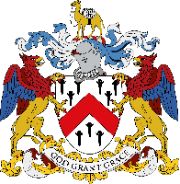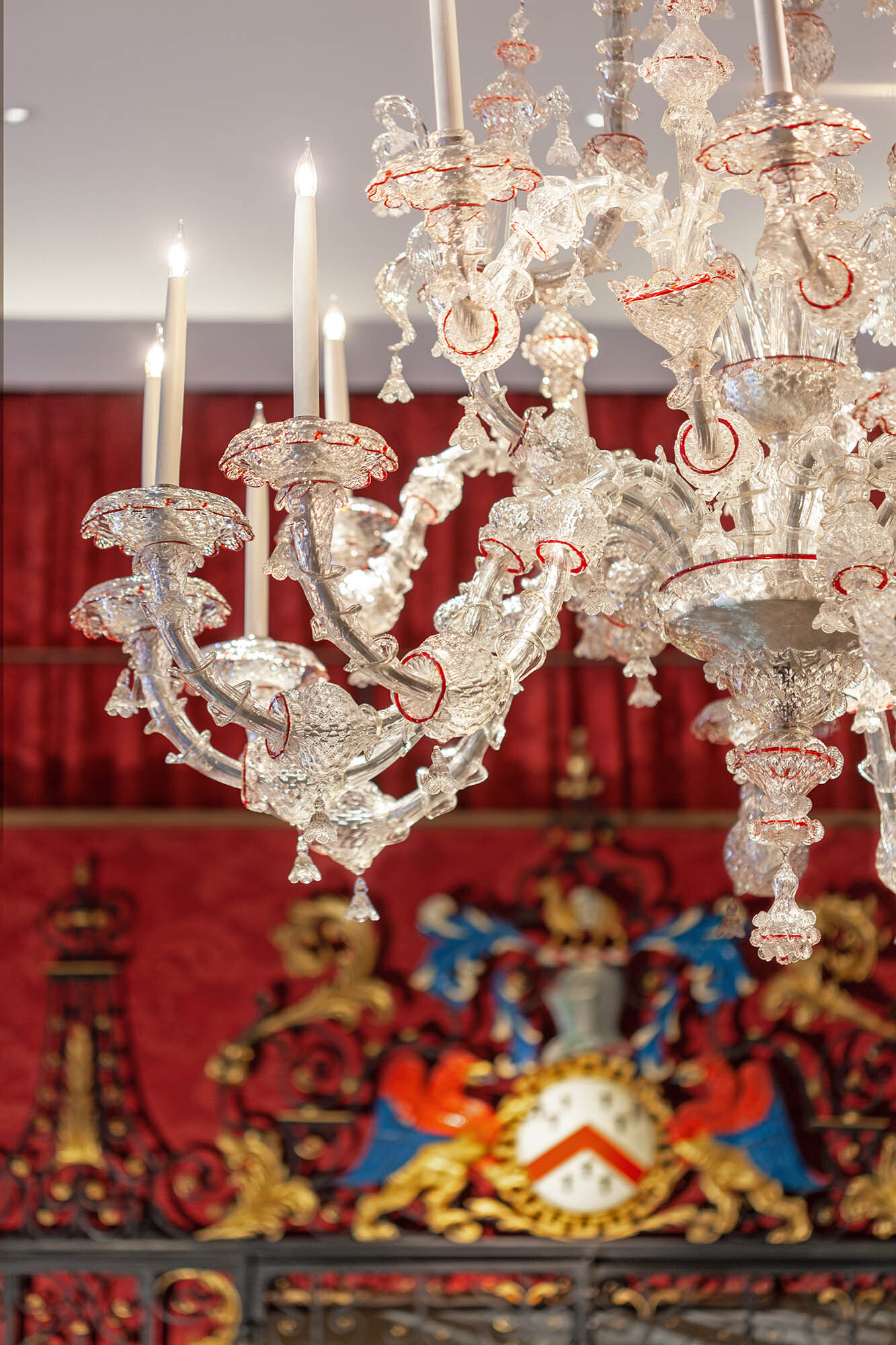There is an undated article in the Grocers’ Company Library. It is by Charles Burford Goodhart (1919-2000), a zoologist, Fellow of Gonville & Caius College Cambridge, and a man with a distinguished Grocer pedigree. In the article he applies the rigour of his academic mind to some problems of Grocer heraldry.
Goodhart begins with the familiar Grocers’ Company coat of arms, granted in 1532, incorporating a chevron with nine cloves, the first use of the clove, as Goodhart notes, as a charge (emblem) in heraldry. He further muses that it does seem rather strange that cloves were chosen, rather than peppercorns which connect more closely with the origin of the Company.
The camel crest granted thirty years later, was described by William Hervey, the Clarenceux King of Arms, who granted them as ‘bearing two (‘pepper Baggs’ deleted) bagys of ppyr [pepper] argent powdered with cloves and corded sable [‘powdered and corded sable’ deleted [‘spangled with Cloves Argent’ deleted]. It is far from clear why the bags of pepper should ever have been painted with cloves, and the deletions in Hervey’s description suggest that he too may have been puzzled. In Sir George Bellew’s up-to-date description of 1949 ‘a camel … with two bales argent semee of cloves’, all references to pepper were removed, perhaps in an attempt to tidy things up.
Goodhart then suggests that seventeenth century Grocers may themselves have been a bit confused as to the real significance of the word ‘clove’ which by itself, and so spelt, had only recently come to mean the spice. Previously it had been ‘clou de girofle’ . Clou is the ordinary French word for ‘nail’ so that ‘clou de girofle’ meant ‘nail of girofle’, referring to the nail-like buds. Remember too that the Fraternity’s records were kept in Anglo-French until the 1420s. So, if the original meaning of cloves was nails, what did they have to do with Grocers? Actually, Goodhart notes, rather a lot, in connection with weights and measures which were very much the concern of the mystery at the time of its foundation in 1345. Before the introduction of the avoirdupois system in 1340, a weighing instrument called an ‘auncel’ was used. The weight of the goods suspended from its shorter arm were marked off by a row of nails. The Latin for nail is clavus, and clou in French. The word clove continued to be used as a unit for weight for wool up to the mid-nineteenth century, long after the connection with auncel nails had been forgotten. Goodhart also draws attention to the fact that in the arms used before the 1532 grant, ten not nine cloves sometimes appear, (four at the top) which might relate to the 10 clove auncel. Perhaps, Goodhart suggests, this lies behind the puzzling choice of cloves in preference to peppercorns on the Grocers’ Company arms.




